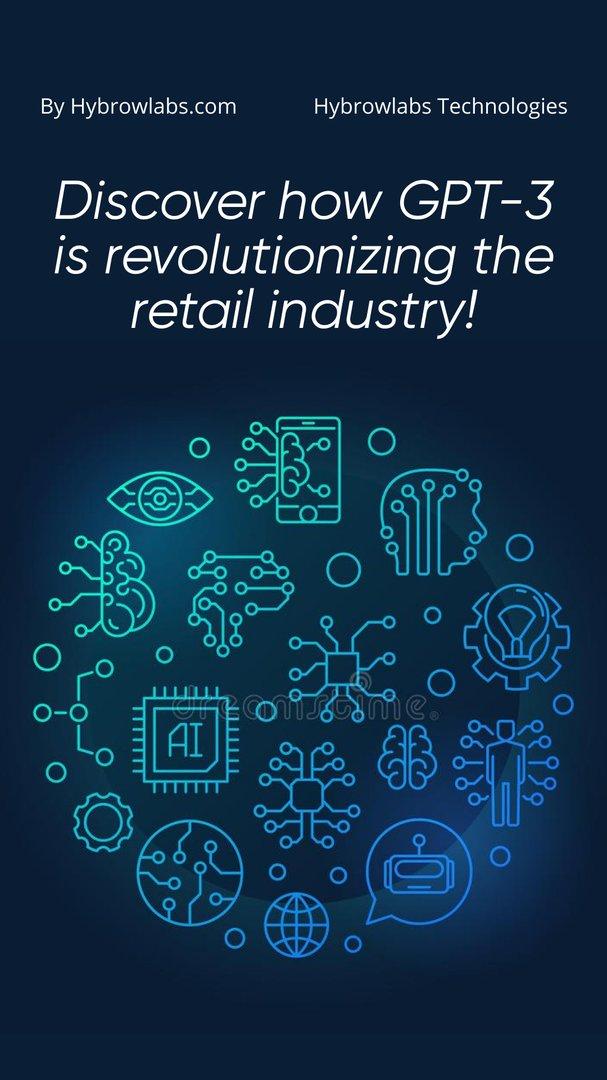
Have you ever wondered how technology is transforming the retail industry? From artificial intelligence & machine learning to virtual try-on features & chatbots, the retail industry is undergoing a massive shift.
One technology that has gained significant attention in recent years is the Generative Pre-trained Transformer 3 (GPT-3) language model developed by OpenAI. GPT-3 is the largest AI language model ever created, & it has the potential to revolutionize the way retailers operate. But how exactly is GPT-3 changing the retail industry, & what are the benefits & challenges of adopting this technology? Let's delve into the world of GPT-3 and explore its impact on the retail industry.
What is GPT-3?
GPT-3 is a state-of-the-art language model developed by OpenAI, a leading artificial intelligence research laboratory. The technology behind GPT-3 is based on deep learning, a subfield of machine learning that uses algorithms to train artificial neural networks to recognize patterns in large datasets. The model is pre-trained on a massive corpus of text data, like web pages, books, & other documents, & it can then generate human-like text in response to natural language inputs.
According to TechTarget's definition of GPT-3, it is a "generative language model created by OpenAI that can generate human-like text in response to natural language inputs." The model has 175 billion parameters & is pre-trained on a massive corpus of text data, allowing it to perform a wide range of natural language processing tasks, such as language translation, sentiment analysis, & content creation.
How Does GPT-3 Work in the Retail Industry?
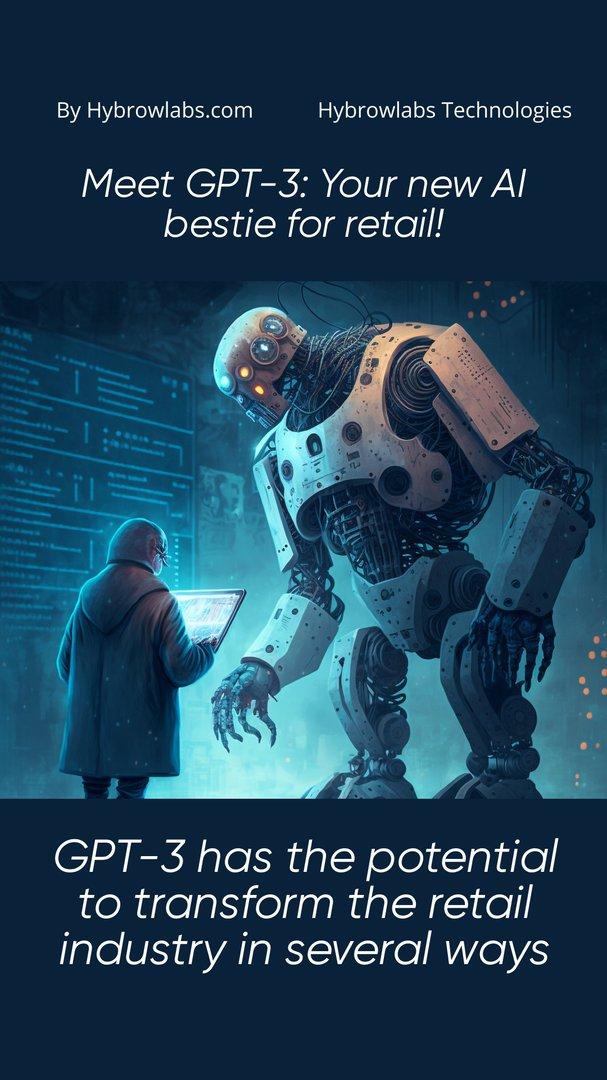
GPT-3 has the potential to transform the retail industry in several ways. One of the most significant areas where GPT-3 can have an impact is customer engagement. Retailers can use the language model to create more personalized & engaging interactions with customers, through chatbots & virtual assistants, for example.
- GPT-3 can be used to create more personalized & engaging customer interactions, through chatbots & virtual assistants.
- The language model can perform natural language processing tasks, like sentiment analysis, language translation, & content creation, to help retailers gain insights into customer preferences & improve their marketing strategies.
- GPT-3 can help retailers optimize their inventory levels & reduce waste by providing accurate forecasts of demand based on sales data & other factors.
- Retailers can use GPT-3 to create immersive shopping experiences, like virtual try-on features & interactive product demos, allowing customers to experience products more engagingly & interactively.
- Overall, GPT-3 has the potential to transform the retail industry by enabling more personalized & engaging customer experiences, improving inventory management, & providing better insights into customer preferences & behavior.
GPT-3 for Inventory Management:
Inventory management is a vital aspect of any retail business. Ensuring that there is enough stock on hand to meet customer demand while minimizing waste & controlling costs is a delicate balancing act that requires careful planning & execution. However, with the help of GPT-3 technology, retailers can now take their inventory management to the next level. How GPT-3 can be used for inventory management in the retail industry:
- GPT-3 can analyze sales data, social media trends, & other factors to provide accurate demand forecasts.
- By predicting demand, GPT-3 can help retailers optimize inventory levels, reducing waste & avoiding stock shortages or overstocking.
- GPT-3 can perform inventory management tasks automatically and in real-time, allowing retailers to make informed decisions quickly.
- The language model can also optimize pricing and promotions based on demand forecasts, increasing profitability.
- GPT-3 can provide insights into customer behavior and preferences, allowing retailers to tailor their inventory and promotions to specific customer segments.
- The technology can be integrated with existing inventory management systems and processes, making it easy for retailers to adopt and implement.
- Overall, GPT-3 can help retailers improve their inventory management, reduce costs, and increase profitability, all while ensuring that customers have access to the products they need.
GPT-3 for retail customer experience:
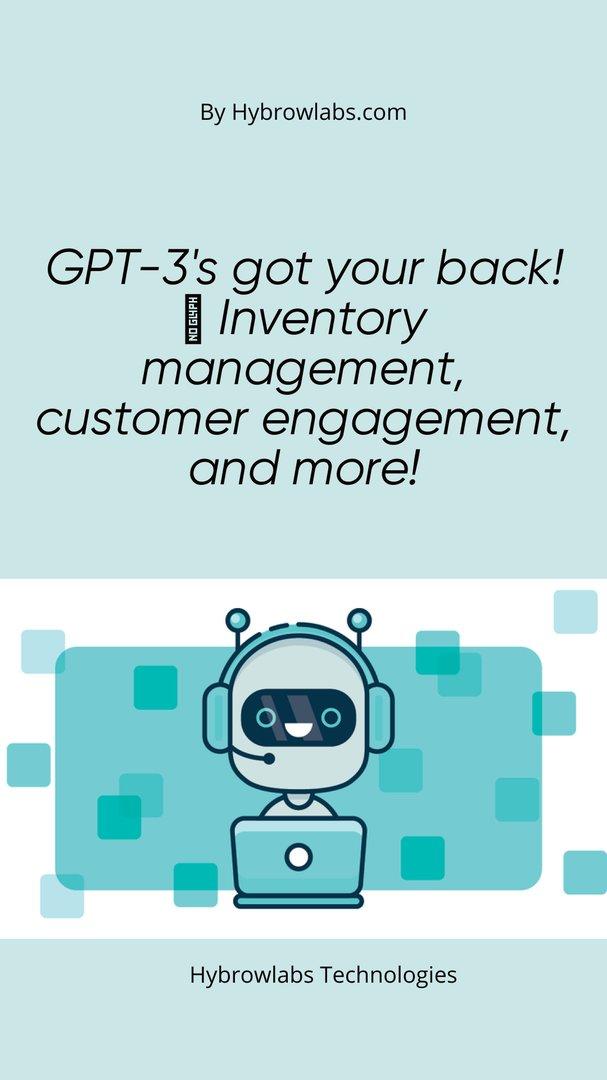
GPT-3 technology can also have a significant impact on the retail customer experience, providing retailers with new ways to engage with customers & enhance their shopping experience. Here are some ways GPT-3 can be used in the retail industry to improve the customer experience:
1. Chatbots:
GPT-3 can be used to create intelligent chatbots that can assist customers in real-time. These chatbots can be integrated into websites, mobile apps, & social media platforms, providing customers with a convenient way to get answers to their questions & receive personalized recommendations.
2. Personalization & Targeted Marketing:
GPT-3 can analyze customer data to provide insights into customer behavior & preferences. This can enable retailers to create more personalized & targeted marketing campaigns that resonate with customers & drive sales.
3. Immersive Shopping Experiences:
GPT-3 can be used to create immersive shopping experiences, such as virtual shopping assistants or augmented reality product demos. These experiences can help customers explore products in a more engaging & interactive way, improving their overall shopping experience.
4. Streamline internal operations:
GPT-3 can be used to automate various internal operations, such as inventory management or order fulfillment. This can help retailers improve efficiency & reduce costs, allowing them to focus more resources on improving the customer experience.
How GPT-3 analyzes customer data?
GPT-3 analyzes customer data using natural language processing (NLP) techniques to extract insights from unstructured data sources, such as social media posts, customer reviews, and support tickets. Here are the steps involved in how GPT-3 can analyze customer data:
- Data Collection: GPT-3 can collect data from various sources, such as social media, customer feedback forms, & surveys.
- Data Cleaning: The collected data is then pre-processed to remove irrelevant or duplicate data, & to make sure consistency across data sources.
- Sentiment Analysis: GPT-3 uses sentiment analysis to determine the emotional tone of the customer data, such as positive, negative, or neutral.
- Entity Recognition: The language model can identify entities within the data, such as product names, brands, or customer segments.
- Topic Modeling: GPT-3 can group the data into relevant topics, such as product features, customer service, or pricing.
- Recommendation Engine: GPT-3 can then use the extracted insights to make personalized product recommendations, create targeted marketing campaigns, or improve customer support.
Conclusion-
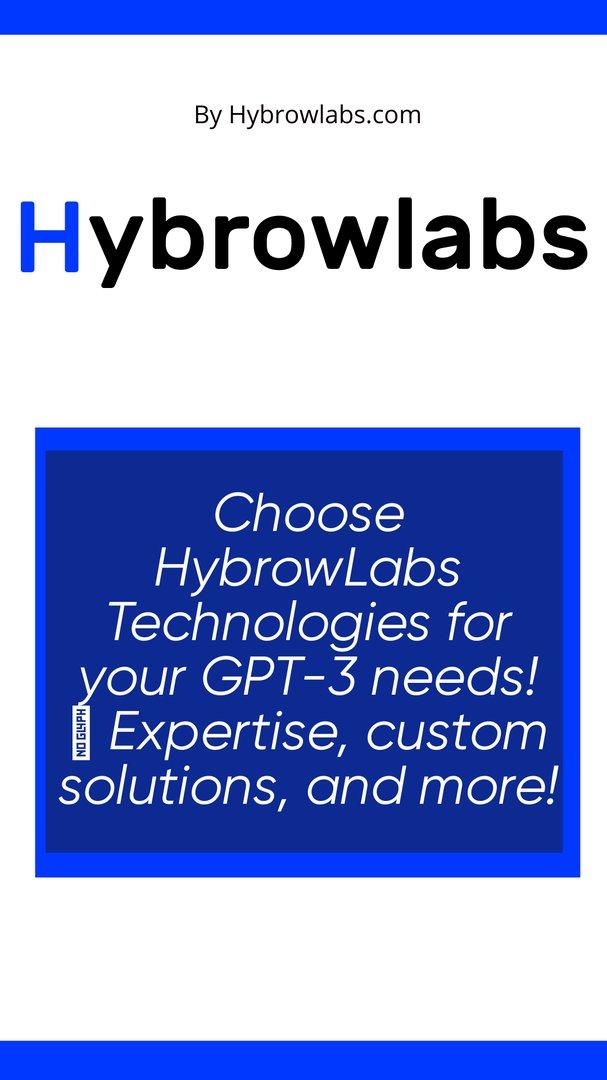
It is clear that GPT-3 technology has the potential to revolutionize the retail industry in many ways. From improving inventory management to enhancing the customer experience, the applications of GPT-3 are endless. As businesses continue to face growing challenges in the rapidly-evolving retail landscape, it is more important than ever to leverage the latest technologies to stay ahead of the curve and the best choice for it is to use Hybrowlabs Expert Development and Consultation Services which would not only help you keep ahead of the line rather also back you up till you find your goal. The quick development process, custom solution, and competitive advantages of Hybrowlbas Technologies will help you here.
FAQ-
1. What is GPT-3, and how does it work?
GPT-3 stands for "Generative Pre-trained Transformer 3" & is a language model developed by OpenAI that uses deep learning to generate human-like text. It works by analyzing vast amounts of data to learn the patterns & structures of language, allowing it to generate coherent & relevant responses to a wide range of prompts.
2. How is GPT-3 being used in the retail industry?
GPT-3 is being used in a variety of ways in the retail industry, including for inventory management, customer service, personalized marketing, & immersive shopping experiences. It can also be used to analyze customer data to improve decision-making & enhance the overall retail experience.
3. What are the benefits of using GPT-3 in the retail industry?
The benefits of using GPT-3 in the retail industry include improved efficiency, enhanced customer experiences, & increased revenue. GPT-3 can help businesses automate routine tasks, provide personalized recommendations to customers, & create more engaging & immersive shopping experiences.
4. Are there any potential drawbacks to using GPT-3 in the retail industry?
One potential drawback of using GPT-3 in the retail industry is the risk of bias in the data it analyzes & the responses it generates. Additionally, there is a concern that GPT-3 could lead to job loss in certain areas of the retail industry, such as customer service & inventory management.
5. How can businesses get started with GPT-3 development in the retail industry?
Businesses can get started with GPT-3 development by working with experienced partners like HybrowLabs Technologies, who can provide the expertise & support needed to develop customized solutions that meet their unique business needs. Additionally, businesses can access GPT-3 through OpenAI's API & other third-party platforms.



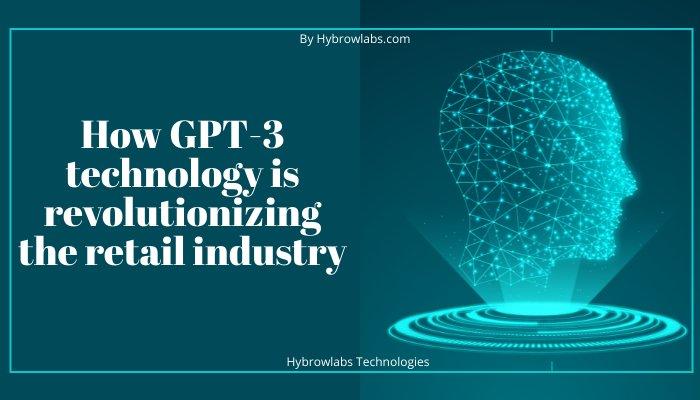


a3dc85.jpg)

.jpg)
fd8f11.png)

.jpg)
.jpg)